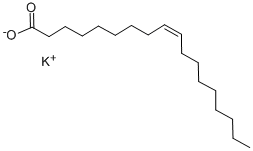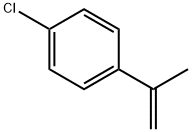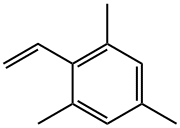TRANS-BETA-METHYLSTYRENE
Synonym(s):trans-1-Phenyl-1-propene;trans-beta-Methylstyrene;trans-Propenylbenzene
- CAS NO.:873-66-5
- Empirical Formula: C9H10
- Molecular Weight: 118.18
- MDL number: MFCD00009280
- EINECS: 212-848-0
- SAFETY DATA SHEET (SDS)
- Update Date: 2024-12-18 14:07:02

What is TRANS-BETA-METHYLSTYRENE?
Chemical properties
clear colourless to very faintly yellow liquid
The Uses of TRANS-BETA-METHYLSTYRENE
Trans-β-methylstyrene was used in the epoxidation reaction of an oxidant solution with a solution of dichloromethane, where nickel is used as a catalyst and benzyltributylammonium bromide as a phase-transfer agent.
General Description
The product exhibits potential exothermic hazards at higher temperatures.
Purification Methods
Distil it under N2 from powdered NaOH through a Vigreux column (p 11), and pass it through activated neutral alumina before use [Wong et al. J Am Chem Soc 109 3428 1987]. [Beilstein 5 III 1184, 5 IV 1359.]
Properties of TRANS-BETA-METHYLSTYRENE
| Melting point: | -29°C(lit.) |
| Boiling point: | 175 °C(lit.) |
| Density | 0.911 g/mL at 25 °C(lit.) |
| refractive index | n |
| Flash point: | 127 °F |
| storage temp. | 2-8°C |
| Water Solubility | Insoluble in water |
| solubility | Chloroform, Methanol (Slightly) |
| form | Liquid |
| color | Clear colorless to very faintly yellow |
| BRN | 1361672 |
| Dielectric constant | 2.73 |
| Stability: | Light Sensitive |
| CAS DataBase Reference | 873-66-5(CAS DataBase Reference) |
| EPA Substance Registry System | trans-Propenylbenzene (873-66-5) |
Safety information for TRANS-BETA-METHYLSTYRENE
| Signal word | Danger |
| Pictogram(s) |
 Flame Flammables GHS02  Corrosion Corrosives GHS05  Exclamation Mark Irritant GHS07  Health Hazard GHS08 |
| GHS Hazard Statements |
H226:Flammable liquids H304:Aspiration hazard H315:Skin corrosion/irritation H318:Serious eye damage/eye irritation H334:Sensitisation, respiratory H335:Specific target organ toxicity, single exposure;Respiratory tract irritation |
| Precautionary Statement Codes |
P261:Avoid breathing dust/fume/gas/mist/vapours/spray. P280:Wear protective gloves/protective clothing/eye protection/face protection. P331:Do NOT induce vomiting. P301+P310:IF SWALLOWED: Immediately call a POISON CENTER or doctor/physician. P305+P351+P338:IF IN EYES: Rinse cautiously with water for several minutes. Remove contact lenses, if present and easy to do. Continuerinsing. P342+P311:IF experiencing respiratory symptoms: call a POISON CENTER or doctor/physician. |
Computed Descriptors for TRANS-BETA-METHYLSTYRENE
New Products
Tert-butyl bis(2-chloroethyl)carbamate 4-Methylphenylacetic acid N-Boc-D-alaninol N-BOC-D/L-ALANINOL 3-Morpholino-1-(4-nitrophenyl)-5,6-dihydropyridin- 2(1H)-one Furan-2,5-Dicarboxylic Acid Tropic acid 1,1’-CARBONYLDIIMIDAZOLE DIETHYL AMINOMALONATE HYDROCHLORIDE R-2-BENZYLOXY PROPIONIC ACID 1,1’-CARBONYLDI (1,2-4 TRIAZOLE) N-METHYL INDAZOLE-3-CARBOXYLIC ACID (2-Hydroxyphenyl)acetonitrile 4-Bromopyrazole 5-BROMO-2CYANO PYRIDINE 5,6-Dimethoxyindanone 5-broMo-2-chloro-N-cyclopentylpyriMidin-4-aMine 2-(Cyanocyclohexyl)acetic acid 4-methoxy-3,5-dinitropyridine 2-aminopropyl benzoate hydrochloride 1-(4-(aminomethyl)benzyl)urea hydrochloride diethyl 2-(2-((tertbutoxycarbonyl)amino) ethyl)malonate tert-butyl 4- (ureidomethyl)benzylcarbamate Ethyl-2-chloro((4-methoxyphenyl)hydrazono)acetateRelated products of tetrahydrofuran








You may like
-
 trans-β-Methylstyrene (stabilized with TBC) CAS 873-66-5View Details
trans-β-Methylstyrene (stabilized with TBC) CAS 873-66-5View Details
873-66-5 -
 trans-β-Methylstyrene CAS 873-66-5View Details
trans-β-Methylstyrene CAS 873-66-5View Details
873-66-5 -
 1975-50-4 98%View Details
1975-50-4 98%View Details
1975-50-4 -
 2-HYDROXY BENZYL ALCOHOL 98%View Details
2-HYDROXY BENZYL ALCOHOL 98%View Details
90-01-7 -
 2-Chloro-1,3-Bis(Dimethylamino)Trimethinium Hexafluorophosphate 221615-75-4 98%View Details
2-Chloro-1,3-Bis(Dimethylamino)Trimethinium Hexafluorophosphate 221615-75-4 98%View Details
221615-75-4 -
 14714-50-2 (2-Hydroxyphenyl)acetonitrile 98+View Details
14714-50-2 (2-Hydroxyphenyl)acetonitrile 98+View Details
14714-50-2 -
 118753-70-1 98+View Details
118753-70-1 98+View Details
118753-70-1 -
 733039-20-8 5-broMo-2-chloro-N-cyclopentylpyriMidin-4-aMine 98+View Details
733039-20-8 5-broMo-2-chloro-N-cyclopentylpyriMidin-4-aMine 98+View Details
733039-20-8
Statement: All products displayed on this website are only used for non medical purposes such as industrial applications or scientific research, and cannot be used for clinical diagnosis or treatment of humans or animals. They are not medicinal or edible.